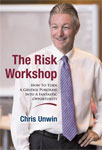CHRISISMS
A fortnightly pearl of wisdom to fast track your success
Chrisism #94 - Mirroring Your Income
02 July 2019
In Chrisism#93 I shared with you my methodology for recommending an appropriate level of Death Cover for a non-working Mum/Dad & Homekeeper. In this Chrisism, I want to share with you my methodology for recommending an appropriate level of Death Cover for a breadwinning spouse.
I believe our mission in this context should be to try and keep things as simple as possible and to avoid crystal ball gazing wherever possible. So the two questions I would ask on the Fact Find are firstly:- “If you or your spouse were to die prematurely, would you want your family to be financially better off, worse off or at least as well off?” and secondly:- “And would that be just for a year or two or if possible on an ongoing basis?” All you have done here is facilitate your client verbalising what anyone would want in this “what if” situation. So here is the discussion that would typically follow the above, and it is designed to conceptualise what a ‘software calculator’ or ‘financial needs analysis’ will try and apply dollar figures to. “So what is it that you are currently worth to your family in income terms?” “$100,000 per annum” (or whatever their gross annual income is) “So in the event of your unexpected death, what is it that would have to be replaced?” “My income i.e. $100,000 per annum” “I understand exactly why you would say that, but in actual fact that is not strictly true, is it? Because the reality is that, were you to die today, your family wouldn’t need $100,000 per annum in the short term to maintain their lifestyle, would they? Because you wouldn’t be around any longer as a ‘cost factor’ on the income would you?! So they might only need somewhere between $60,000 and $80,000 per annum (depending on how much of your income is currently spent on yourself) in the early years after your death – would you agree?” “Yes” “However, on the other side of the coin, we need to be aware of several factors:- firstly, if you had still been around in 5 or 10 years’ time, would you still be earning $100,000 per annum?” “No, probably more with promotions etc.” Exactly. Then there is our old friend inflation. Even at only 3.5% p.a., inflation would have the effect of halving the value of money over a 20 year period, so we obviously need to factor in the negative impact that inflation will have on the purchasing power of any ongoing income over a period of time – would you agree?” “Yes” “And lastly, I’m sure you are you aware that children tend to get more expensive as they get older, not cheaper, yeah?” “Yes” “Ok, so if we put all of these ingredients into the mix, in the absence of any more exact a science, would you feel comfortable if we made sure that, should you die unexpectedly, there was an amount of money available for your spouse to invest which, when invested at a conservative rate of return (say 5%), could replace your income today (that is, $100,000) on an ongoing basis – the rationale being that, in the early years your family would only need between $60,000 and $80,000 per annum, which would mean that we had a ‘buffer’ to reinvest so that over time your family had the capacity to increase their income to combat inflation and meet increasing commitments – just as you would have been able to do had you still been around?” “Yes, I would be comfortable with that” “Great – also, God forbid but if your spouse were to die prematurely after your death, would you want to make sure that the capital left behind on your death was still intact as an inheritance for the kids, or would you want it to have been run down to almost nothing?” “Intact” “I thought as much. So to summarise, all we are really trying to do is mirror your income on an ongoing basis for your family whether you are around to generate it or not – are you happy with that concept?” “Yes” This engagement process would result in a recommendation for Death Cover for the breadwinner of 20 x Income @ a 5% return (whilst keeping the capital intact), and I reckon it’s a helluva lot simpler than most of the methodologies used to come up with an appropriate sum assured – and it typically results in a larger sum assured as well. If you would like to flesh out this part of the client engagement process as well as pick up a bucketful of client friendly engagement tools throughout the initial risk advice process, then click on the link below to register for my upcoming full day Risk Workshop in your capital city. The Risk Workshop - Australian Roadshow
|





